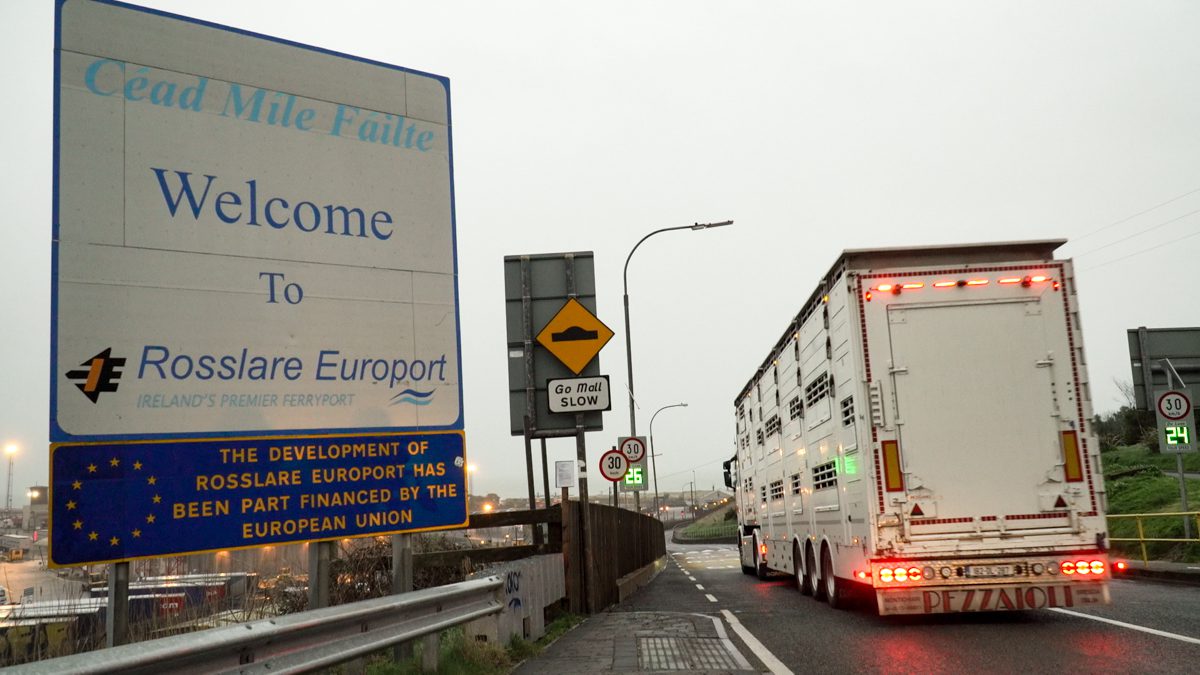Live cattle exports are vital to the Irish beef industry. In a sector where beef processors have the monopoly, getting cattle out of the country provides more competition ringside and when it comes to the numbers available for slaughter.
With approximately 350,000 extra dairy cows on the island of Ireland since the unshackling of milk quotas in 2015, the live market has never been as important to both the dairy and beef industries.
Each year, a large number of dairy bull calves set sail from Ireland – in specialised livestock-carrying trucks aboard the boats – to the French port of Cherbourg – a destination which has become somewhat of a buzzword of late.
It has been well documented that a bottleneck has emerged at the lairage near the French port, from where Irish calves continue their journey to other European countries.
This was not helped by the recent inclement weather which saw ferries cancelled due to unsafe sea conditions; this led to a calf price reduction in some marts across the country. However, the trade has recovered somewhat since.
The Minister for Agriculture, Food and the Marine, Michael Creed, welcomed an additional 400 head capacity approved by French authorities at Cherbourg recently; however, this has been criticised by some farm organisations and exporters which contend that significantly more space is needed.
Based on current ferry sailing schedules, this would provide space for an extra 1,200 animals per week. During the past week, the first consignments of calves departed on the W.B. Yeats, but this is said to be of no addition unless it sails on alternative days to the Stena Line schedule.
As the aforementioned Cherbourg debate continues, we take a look at how many calves have been exported and where the main destinations lie.
According to the Irish Cattle Breeding Federation (ICBF), some 772,487 calves have been registered on dairy farms up to and including the week ending March 15, 2019.
The following analysis is based on Bord Bia figures from January 1, 2019, up to and including the week ending March 3, 2019, and the corresponding period in 2018.
The chief importers of Irish dairy calves are Spain and the Netherlands and these markets have seen some level of growth so far in 2019. The number of calves exported to Spain stands at 11,861 head – up from 9,889 head in 2018 (an increase of 1,972 head).
Moving to the Netherlands, the number of calves shipped to this country amounts to 14,454 head. That’s up from 9,766 head in the corresponding period of 2018 – a jump of 4,688 head.
To put this into perspective, across the entire year of 2018, just shy of 73,000 calves were shipped to Spain, while the total number that made their way to Holland stood at 48,646 head.
Looking at Italy, the number of calves that were exported live to Italian shores stands at 3,787 head – an increase of 2,504 head when compared to the same period in 2018.
Another country which witnessed growth in its calf market is France. The total number of calves exported live to France so far this year amounts to 408 head – a slight increase of 96 head.
The calf trade to Belgium recorded a decline. Supplies of these animals are down by 1,234 head, with the total calf count at 883 head. It stood at 2,117 head for the same period in 2018.
In addition, 116 calves (up from 88 head in 2018) have made the short journey north of the border to Northern Ireland.
- Spain: 11,861 (+1,972 head or +20%);
- Netherlands: 14,454 (+4,688 head or +48%);
- Belgium: 883 (-1,234 head or -58%);
- Italy: 3,787 (+2,504 head or +195%);
- France: 408 (+96 head +31%);
- Northern Ireland: 116 (+28 head or +32%).
Other live cattle exports
The total number of cattle exported up to and including the week ending March 3, 2019, stood at 38,980 head, according to Bord Bia figures. This is a 9,635-head (or 33%) increase on the number of cattle exported live during the same period in 2018.
However, as outlined above, of the 38,980 animals that have been exported, 29,525 are dairy calves. However, there has been good news on the live cattle export front recently, with a number of boatloads of cattle destined for Turkey and Libya in the coming weeks.
The breakdown of each type of animal and the change from 2018 to 2019 is outlined in the table below.




